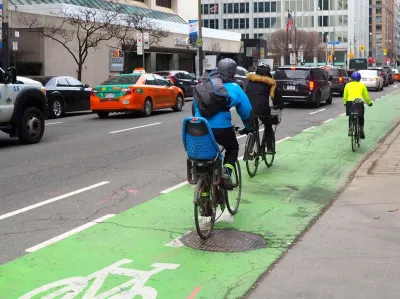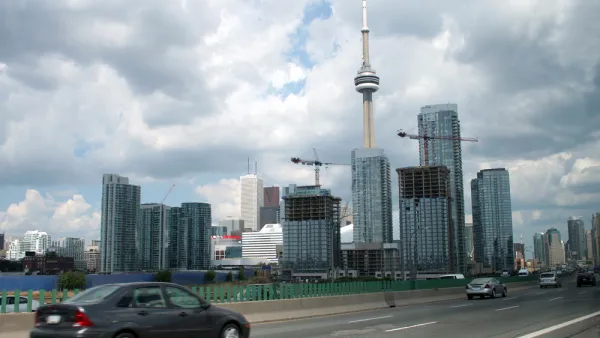More than two years into a 10-year plan, the city has installed only a fraction of planned bike lanes.

Ben Spurr reports on the status of Toronto’s Cycling Network 10 Year Plan, which the city council approved in 2016. Biking advocates say the city is not meeting the milestones needed to keep the plan on track.
The city has completed only about 6 percent of the almost 350 lane miles outlined in the plan. In addition, annual expenditures of the $153.5-million plan have been below target amounts. Last year, for example, investments should have totaled $16 million, but the city only spent $10 million.
City officials acknowledge that the plan is running behind schedule and say more staff is needed. They also say that the planning and implementation process takes time and that bike lane installations are often dependent on other road projects, which can face delays or rescheduling.
Still, bike advocates want to know why the city is not keeping up with a detailed project schedule that was part of the approved plan. In addition, critics say the city needs to prioritize corridor studies to identify bike lane sites on main arterials. "Councillor Joe Cressy, a vocal cycling advocate, said major streets need to be added back into the plan, otherwise the city will be confined to improving cycling routes on less-used residential streets," notes Spurr.
FULL STORY: City’s execution of 10-year bike plan ‘has not delivered on expectations,’ says advocate

National Parks Layoffs Will Cause Communities to Lose Billions
Thousands of essential park workers were laid off this week, just before the busy spring break season.

Retro-silient?: America’s First “Eco-burb,” The Woodlands Turns 50
A master-planned community north of Houston offers lessons on green infrastructure and resilient design, but falls short of its founder’s lofty affordability and walkability goals.

Delivering for America Plan Will Downgrade Mail Service in at Least 49.5 Percent of Zip Codes
Republican and Democrat lawmakers criticize the plan for its disproportionate negative impact on rural communities.

Test News Post 1
This is a summary

Test News Headline 46
Test for the image on the front page.

Balancing Bombs and Butterflies: How the National Guard Protects a Rare Species
The National Guard at Fort Indiantown Gap uses GIS technology and land management strategies to balance military training with conservation efforts, ensuring the survival of the rare eastern regal fritillary butterfly.
Urban Design for Planners 1: Software Tools
This six-course series explores essential urban design concepts using open source software and equips planners with the tools they need to participate fully in the urban design process.
Planning for Universal Design
Learn the tools for implementing Universal Design in planning regulations.
EMC Planning Group, Inc.
Planetizen
Planetizen
Mpact (formerly Rail~Volution)
Great Falls Development Authority, Inc.
HUDs Office of Policy Development and Research
NYU Wagner Graduate School of Public Service





























